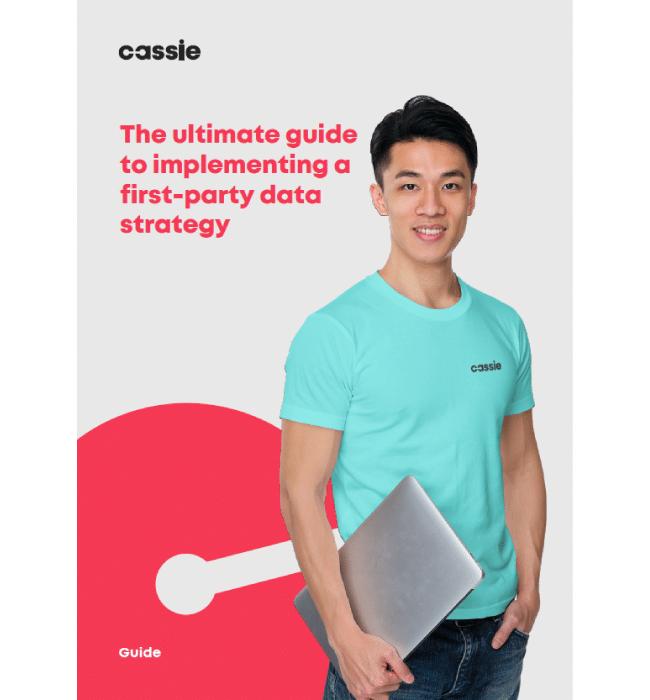The promise and problem of personalization
Every business-to-consumer (B2C) company strives to achieve one thing – deeper customer engagement that leads to loyalty and conversions. Meanwhile, consumers increasingly expect brands to understand their needs, respect their preferences, and deliver experiences that feel personal and authentic.
Bridging this gap requires a data-driven approach – one built on active personalization. As one source puts it, “Delivering a personalized customer experience is no longer a luxury – it’s a necessity.”
This article explores how active personalization can overcome the “personalization paradox,” how AI enhances this process, and how progressive profiling provides a scalable, privacy-first solution.
- Why personalization matters
- The personalization paradox
- When personalization misses the mark
- From passive to active personalization
- The data challenge – and how AI helps
- Avoiding the personalization paradox with active intelligence
- Progressive profiling: Building trust through ongoing dialogue
- Conclusion
Why personalization matters
When done right, personalization adjusts every customer touchpoint – from product recommendations and website experiences to tailored communications – in ways that resonate with each individual.
The payoff is clear:
- 65% of customers say targeted promotions are a top reason they make a purchase (McKinsey & Company).
- Targeted campaigns can drive a 1–2% increase in sales and a 1–3% increase in profit.
However, personalization isn’t always a guaranteed win.
The personalization paradox
Despite its potential, personalization can backfire. Research from Gartner shows that 53% of customers report negative experiences with personalized marketing – making them over three times more likely to regret their purchase and less likely to buy again.
Why? Because many personalization efforts rely on passive data collection – inferred preferences from browsing, clicks, or third-party data – rather than direct, meaningful input from customers. This often leads to misaligned messaging, timing, or tone.
When personalization misses the mark
Consider a customer searching for orthotic shoe inserts. On the surface, she wants a solution for foot pain – but her real goal might be to jog again, enjoy a trip to Rome, or regain lost fitness confidence.
If a company floods her inbox with ads for inserts before she’s even ready to buy, she’ll likely feel pressured or misunderstood. Even if she purchases, she may later regret the decision – realizing that another product would have better met her actual needs.
Overly aggressive targeting can feel invasive and erode trust, especially in today’s privacy-conscious environment.
From passive to active personalization
The solution is simple yet powerful: just ask the customer.
Active personalization invites users to share their needs, goals, and preferences directly. It transforms personalization from a guessing game into a collaborative experience – one that customers actively participate in.
As one Gartner analyst advises:
“Passive personalization tactics alone no longer suffice; they can inadvertently intensify the negative emotions that customers experience when trapped in decision-making pitfalls. CMOs must pivot toward active, course-changing personalization that reveals customers’ hidden needs, validates their decisions, and pulls them from pitfall to purchase.”
This approach not only delivers more relevant experiences but also respects the customer’s sense of control and privacy.
The data challenge – and how AI helps
Active personalization relies on a significant volume of data – gathered through questionnaires, chat interactions, gamified surveys, and other engagement tools. Scaling this process across thousands or millions of customers can quickly become complex.
That’s where artificial intelligence (AI) steps in. AI can:
- Analyze large data sets in real time
- Trigger personalized outcomes automatically
- Enforce customer preferences across systems
- Continuously refine experiences based on ongoing input
AI-driven personalization transforms static data into living intelligence, enabling brands to deliver dynamic, compliant, and empathetic experiences at scale.
Avoiding the personalization paradox with active intelligence
AI-powered active personalization helps companies move beyond surface-level targeting. Instead of overwhelming customers with assumptions, brands can support them in clarifying their goals, making confident decisions, and feeling respected throughout the journey.
The result? Stronger engagement, higher loyalty, improved sales efficiency – and fewer regrets.
Even better, active personalization leverages zero-party data – the information customers willingly provide – minimizing the privacy, cost, and compliance challenges associated with third- or even first-party data.
Progressive profiling: Building trust through ongoing dialogue
To make active personalization sustainable, companies can adopt a progressive profiling approach. This strategy collects small, meaningful pieces of customer information over time, rather than asking for everything upfront.
Progressive profiling allows brands to:
- Build richer customer profiles organically
- Deliver better-tailored experiences with every interaction
- Reduce friction in onboarding and consent processes
- Maintain transparency and user trust
By combining active personalization with progressive profiling, businesses can evolve their understanding of each customer in step with that customer’s journey – staying relevant without crossing the line into intrusive territory.
Conclusion
Personalization works best when it’s active, ethical, and iterative. When companies invite customers into the process, respect their boundaries, and use tools like AI and progressive profiling to scale intelligently, personalization transforms from a marketing tactic into a trust-building strategy.
The future of customer engagement lies not in knowing more, but in asking better – and using those insights to create experiences that truly connect.

Ultimate guide to first-party data strategy
What you’ll find inside:
- Master the art of gathering rich, valuable insights directly from your customers
- Learn how to navigate the ever-changing landscape of data privacy regulations and build trust
- Get an in-depth overview of the latest tools and technologies available to optimize your data collection
- Follow our proven step-by-step framework to integrate data collection practices into your organization and drive tangible results

